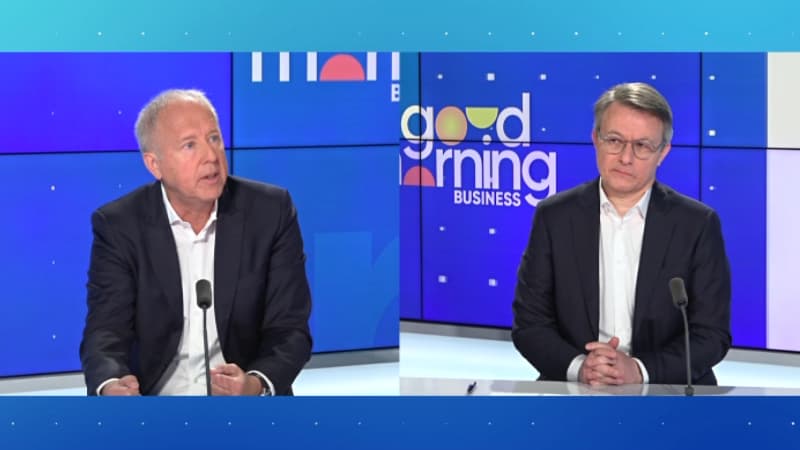When will the price drop on our shelves? While the increase exceeded 17% in April for a year according to Circana, the government’s wish now is for inflation to subside at the start of the next school year.
But for that, the negotiations between distributors and manufacturers, the last of which ended last March, must be resumed quickly. This is also the ultimatum given by Bruno Le Maire to the industrialists on BFMTV in April.
Why does it always get stuck? It is to try to see more clearly what the two parties discussed this Wednesday at BFM Business. With, on the one hand, Dominique Schelcher from System U, who represented the distributors, and on the other Jean-Philippe André, head of Haribo France but who this morning wore his cap as president of Ania, the association of product manufacturers agri-food
For the distributor, obviously, now it is necessary to renegotiate prices downwards.
“I call for the reopening of the negotiations because a certain number of raw materials have been falling for several months, recalls Dominique Schelcher. We can give some figures: between April 21, 2022 and April 21, 2023, sunflowers fell 48%, durum wheat wheat 11%, fodder barley used for animal feed 36% and rapeseed 53%, so the idea is to reopen the discussions as soon as possible.
After a surge in commodity and energy prices that peaked in the second quarter of 2022, the vast majority of wholesale prices have been on a downward trend, and have been for several months. And yet fuel aside, consumers continue to pay high prices for their retail products.
“Private brands are the ones that increased the most”
“Last year, at the same time that the war had just broken out, the government had called on us to sign a letter without waiting for negotiations, says the head of System U.
Are manufacturers, therefore, the only ones responsible for the current inflation of consumer products? For Jean-Philippe André, who calls for a departure from the logic of “mistigri that we throw at each other”, the trial against the industrialists is unfair.
“Last year we were among those who said ‘We have to negotiate in the face of an incredible increase, we have to renegotiate’. And we said that the day that passes to the other side we call for reversibility,” he recalls. the poisonous side of inflation, interests us. If it were that simple…”
More subject to increases in the cost of raw materials, which represent a greater part of the final price, white brands and especially premium prices are the ones that have increased the most in the last 18 months.
In fact, price increases have leveled off for these private label brands, but in one year, classic private label and entry-level prices increased 20.2 and 21.8% respectively, according to Circana, compared with an average of 16.6% for national brands. For Jean-Philippe André de l’Ania, the fall in retail prices is automatically out of step with the prices of raw materials.
“Worst Buyers on Earth?”
“It’s not that simple, remember. Every time world prices drop, we’re going to take note. Between the time you have price variations, there are hedge rates: if I bought my wheat six months ago with an index of 100 and even if this index today is at 95, you know very well that I have to wait until the end of my rate. coverage to see you again”.
However, his opponent is surprised by this argument, which according to him always goes in the same direction.
“I understand that there are shares that have been bought at a certain price but very curiously in the ‘negotiations’ that have just ended, nobody had a past share bought at a cheap price, not everyone had only shares bought at the highest price.” […]Dominique Schelcher is surprised. Or you have the worst buyers in the world only buying at the highest prices, but I can’t believe it.”
Although Bruno Le Maire reiterated this Wednesday his call to Bercy for distributors and manufacturers, it is likely that the coming weeks will be lively in the negotiation tables.
Source: BFM TV


